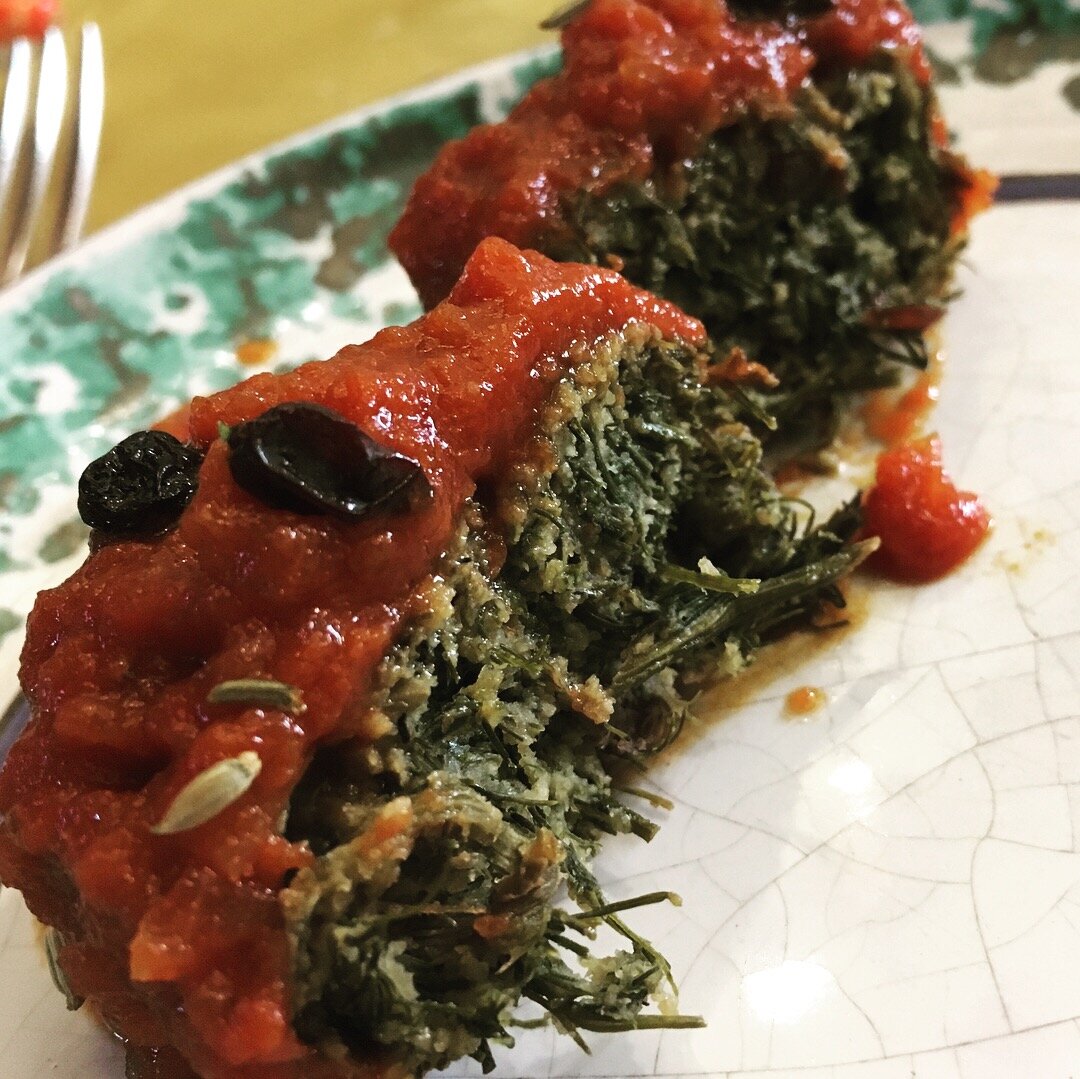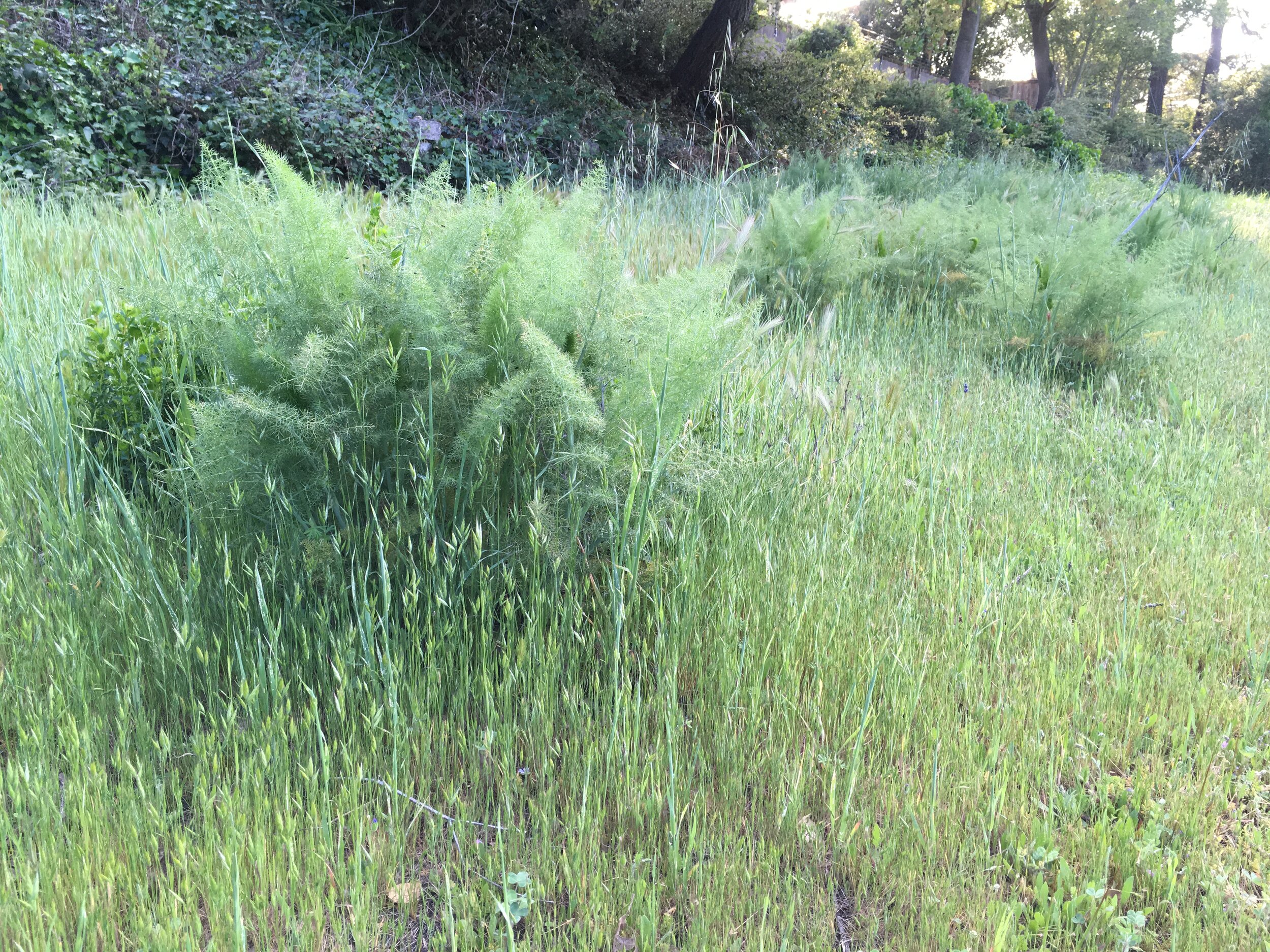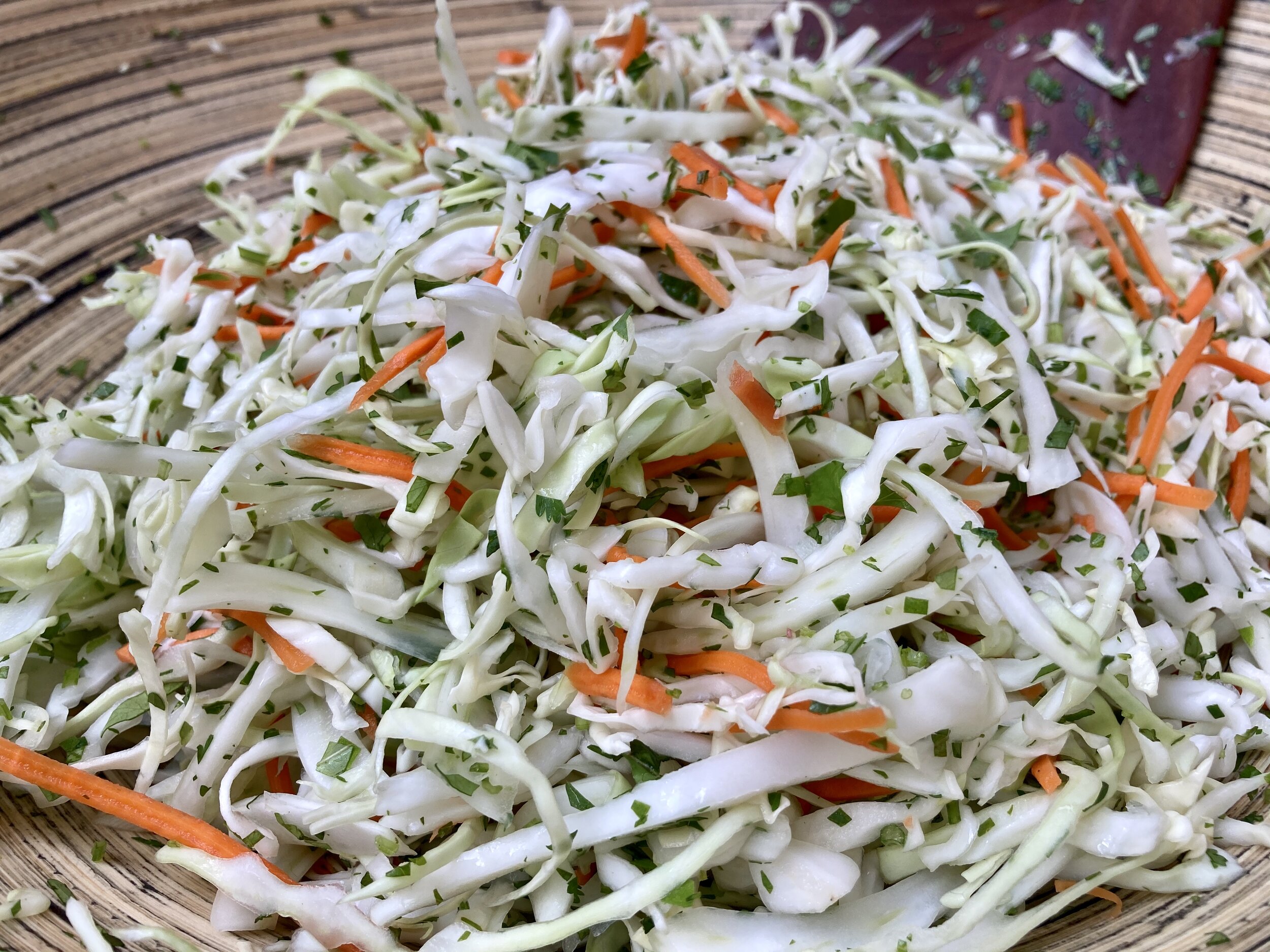Sicily’s Meatless Meatballs
Polpette di Finocchietto
A stalk of freshly foraged wild fennel, foeniculum vulgare, with fragrant fronds attached.
One of the best and most surprising things I ate in Sicily was a vegetarian dish translated as “wild fennel balls” on the English menu. As a lover of all things fennel, I had to try them despite that dubious description, and I’m so glad I did.
I was obsessed with trying to replicate them before I’d even finished eating them.
My earliest efforts suffered from the seasonal lack of fresh, abundant wild fennel (foeniculum vulgare) fronds – which make up most of the dish’s flavor and bulk, and give it that fantastic dark green color. The domesticated variety of fennel we buy in stores or farmers’ markets doesn’t have the same taste or intensity of flavor in the fronds.
But this spring, as tender new finocchietto fronds started sprouting up all over Napa Valley (and the coronavirus pandemic inspired me to start foraging for food), I finally cooked a credible replica standing on the shoulders of this blog and some great tips from my childhood friend Megan (mille grazie to both of you!).
These polpette taste wild in an herbaceous and exotic way . . . not funky or feral at all. They’re tender and satisfying, and odds are you’ve never tasted anything quite like them.
The polpette that started it all… at Tischi Toschi in Taormina.
Tischi Toschi is an absolutely can’t-miss place if you want to try classic Sicilian cooking in situ.
“I was obsessed with trying to replicate them before I’d even finished eating them.”
Here is my modified recipe for real-deal polpette di finocchietto, for those of you with wild fennel near you that isn’t growing by a paved roadside or other dangerous runoff areas.
For more about wild fennel, including how to safely and positively identify it in the wild (ESSENTIAL), check out this foraging specialist’s post, here.
This recipe will work with domesticated fennel stalks and fronds, too, as long as you don’t boil the fronds – that will leach out what little flavor they had to begin with. Just chop domesticated fronds and stir them raw into the cooked stems/stalks. The flavor of domestic fennel polpette will be sweeter and less charismatic, but they still should turn out really, really good.
Pro tip: If you shop at a farmers’ market, sometimes the farmers will give you fennel stalks/fronds for free. Can you believe most people throw this culinary gold away?
There are links in the recipe below to products I recommend. As an Amazon Associate, I may earn a commission (at no additional expense to you) from qualifying purchases.
Behold, my wild fennel balls. They’re not quite as amazing as Tischi Toschi’s, but they’re a heck of a lot easier to have for dinner this weekend.
Polpette di Finocchietto
(a.k.a. Wild Fennel Balls)
Makes 12 meatless meatballs | 4 main course servings
½ tsp fennel seed, plus ½ tsp more for garnishing
3 Tbsp dried currants
14 oz fresh wild fennel stalks and fronds, washed well (ideally 1-3 oz should be fronds, but do what you can)
2 Tbsp pine nuts
1½ oz freshly grated Parmigiano-Reggiano or Pecorino cheese, or a combination
salt and freshly ground black pepper
3½ oz panko or other dried bread crumbs or (gluten-free is fine)
4 large eggs, beaten
¼ cup good olive oil for brushing
3 cups high quality prepared tomato marinara sauce
spicy red pepper flakes (optional)
Get the currants soaking and the fennel water on.
Put about five inches of water and ½ tsp fennel seed into a small pot, and bring it to the boil. Take out ½ cup of the boiling water and pour it over the dried currants to soften them. While the currants are soaking, strip the fennel fronds off their stalks. Cut the stalks and stems into pieces 3” long or shorter; keep the fronds whole, and in a separate pile.
Cook the fennel, toast the nuts.
Salt the boiling water generously and cook the stalks/stems in it until very soft, usually about 15 minutes. While the stalks are cooking, toast the pine nuts and measure out the remaining ingredients. When the stalks/stems are completely soft, throw wild fronds in with the stalks and cook a minute or two more to soften them. Drain the cooked fennel well and let it cool until it’s safe to touch. Drain the currants while you’re waiting, but save the soaking liquid to add to your sauce.
Press out as much water from the fennel as you can, then chop it well with a knife (or pulse a few times in a food processor) to break it down to a texture you like. I prefer it pretty finely chopped – no bigger than quarter-inch chunks.
Mix the goods, shape & chill the balls.
In a large mixing bowl, mix the chopped fennel with the toasted pine nuts, two-thirds of your soaked-and-drained currants, and the grated cheese. Season with salt and generous amounts of black pepper (and red pepper flakes, if you like). Then add the breadcrumbs and beaten egg and mix everything together with your hands until it’s evenly incorporated.
Shape the mixture into 12 big “meatballs” (polpette) about 2 inches in diameter. Cover and chill in the fridge at least 20 minutes.
Bake, sauce and serve.
When you’re ready to finish cooking the polpette, preheat your oven to 400 degrees Fahrenheit. Arrange them on a lined baking sheet. Dab the top of each ball with olive oil and bake 20-25 minutes, until they’re crisping up on the outside.
During those 20-25 minutes, warm up your tomato sauce in a small saucepan with the currant soaking water you saved. Adjust the seasoning of the sauce the way you like it, adding red pepper flakes if you like things spicy. When the polpette are cooked, serve them drenched in hot tomato sauce, garnished with the remaining currants and ½ tsp fennel seeds.
If these are your starter, aim for two polpette per person. Three make a nice main course portion if you’re having a starter as well.
These reheat well for a few days, if they last that long.
Wild fennel fronds (and lots of foxtails) busting out in Napa, early April. Don’t they make you hungry now?














